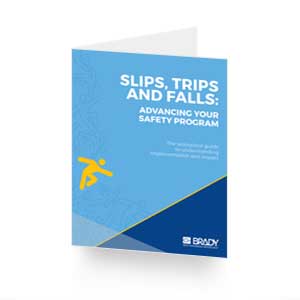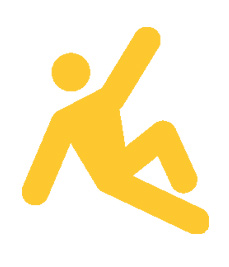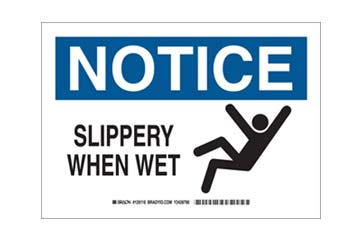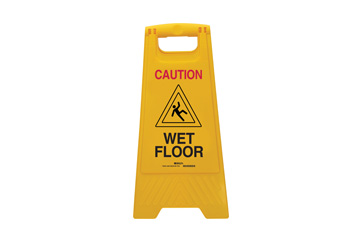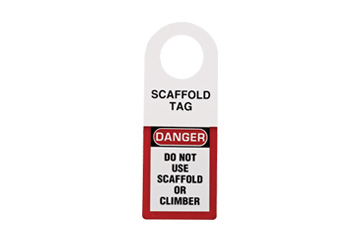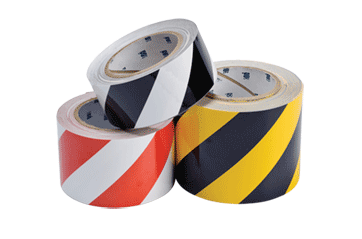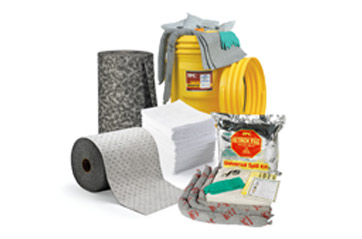How Do Slips, Trips and Falls Occur?
Slips, trips, and falls occur when there is too little friction or traction on a walking surface,
when a foot or lower leg hits an object while the rest of the body continues to move, or when
the center of balance is lost resulting in a descent
to the floor, against an object or to a surface at a lower level than the original
surface.1
These incidents are often caused by slippery, irregular or uneven surfaces, obstacles on the
floor or uncovered/unidentified hazard areas.
Hazards relating to slips, trips and falls are frequently top offenders on OSHA's top 10
violation lists. In 2015 alone, slips, trips, and falls were tied to three of the top ten
violations, and two of the top three. These violations included
hazards relating to fall protection (#1), scaffolding (#3), and ladders (#7).2
You wouldn't be here if you didn't think slips, trips, and falls prevention was important. You also should know by now the implications of not taking the right steps to complying with OSHA's Walking-Working Surfaces standard and the potential dangers associated to non-compliance. Now, let's outline each step that you can take to prevent slips, trips and falls hazards.
Building A Response Plan
Despite our best efforts, accidents sometimes happen. In the event that a slip, trip or fall
does occur at your workplace, you need a plan that allows everyone to act quickly and
effectively. When you're creating a response plan here are a
few guidelines to keep in mind:
1. Provide assistance
This may sound like a given, but many times in the heat of the moment, those who immediately
respond to an emergency may not know what to do. Make sure there is a clear and easy way to
provide first aid or call for emergency medical assistance.
2. Report the incident
The appropriate personnel within your work place need to have a system in place to record
slips, trips, and fall incidents. Furthermore, these incident reports should be kept to review
common incident areas and provided to your insurance company.
3. Find ways to avoid the incident in the future
This is when you can identify area of training, different products or signage needs, and
housekeeping practices that should be used to ensure employee safety and compliance to OSHA
standards in the future.
